Ten other hidden gems of Orkney
There are so many interesting places to discover in Orkney that most Islanders haven’t even seen them all. If you’ve been to Orkney before, or if you’re an islander looking for somewhere new, take a look at our lesser-known places to visit below!
Six dramatic deep grooves are imprinted in the stone at the top of the stairs of Lady Kirk in Sanday. These are known locally as the Devil’s Clawmarks!
See also:
Ten hidden gems of Orkney
Ten more hidden gems of Orkney
An extra ten hidden gems of Orkney
Ten further hidden gems of Orkney
Ten additional hidden gems of Orkney
Another ten hidden gems of Orkney
Ten new hidden gems of Orkney
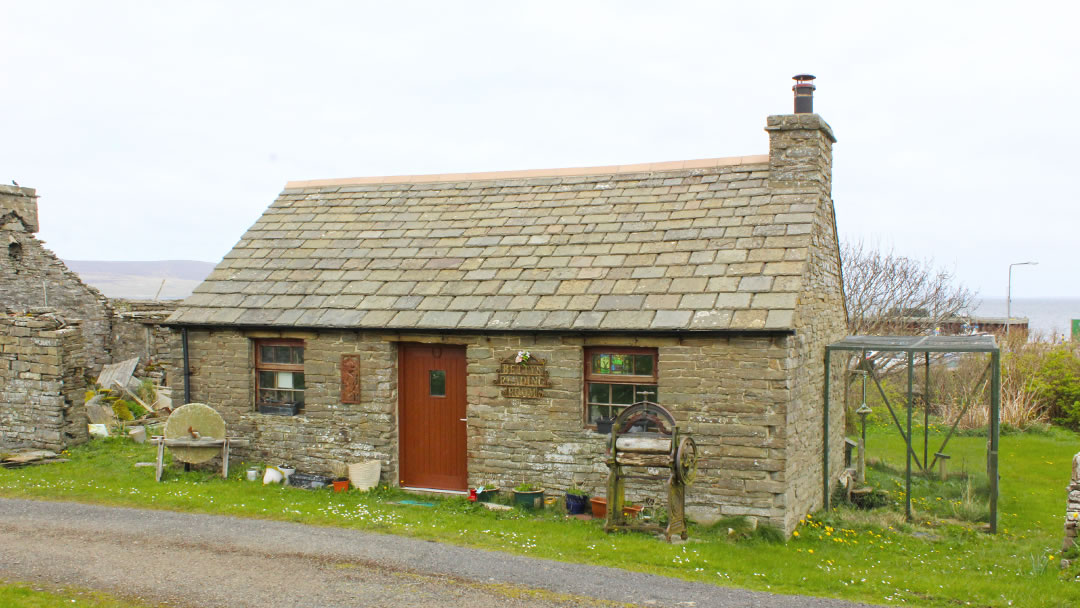
1) Betty’s Reading Room, Tingwall
In Evie, there’s a lovely little cottage jammed from floor to ceiling with books to read. Betty’s Reading Room is located next to the Tingwall pier, where you can catch a ferry over to Rousay, Egilsay and Wyre, and it is free for the public to enter.
Betty’s Reading Room was created by Jane Spiers and Craig Mollison in memory of their friend Betty Proctor, a schoolteacher who loved to read. They renovated the cottage, installed comfy sofas inside and filled it with books and curios (including a beautiful stained-glass window). Outside there’s a garden to enjoy, with a hen house called ‘Cluckingham Palace’ and a striking mermaid sculpture by Francis Pelly.
Betty’s Reading Room is a cosy sanctuary devoted to books – there’s a book for everyone to enjoy in here!
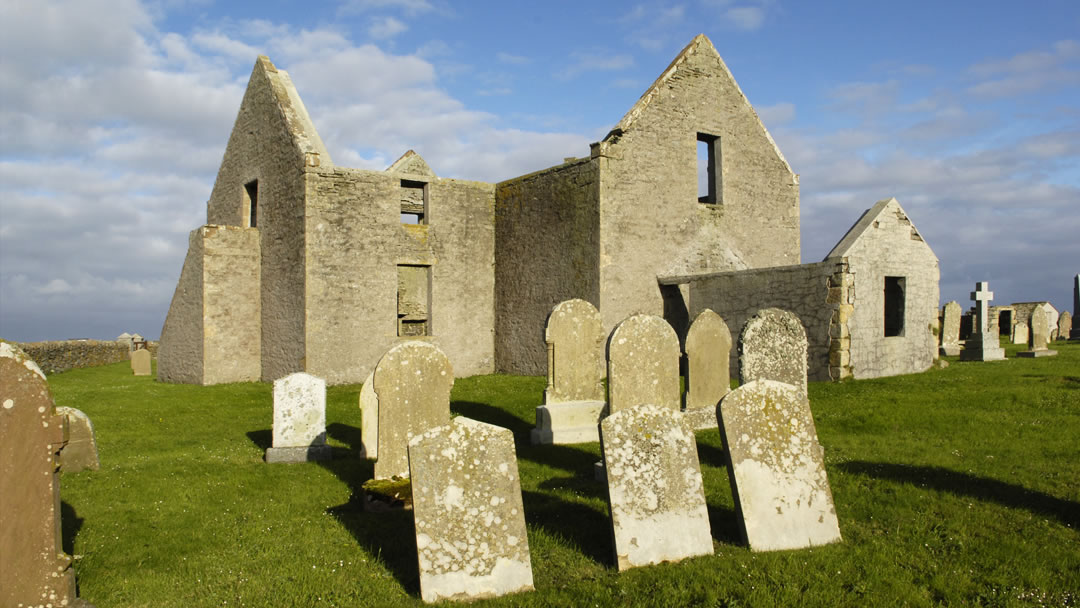
2) Lady Kirk, Sanday
The roofless Lady Kirk lies on the road between Lady and Kettletoft on the island of Sanday. The church was built in 1773, probably on top of an older place of worship, and though it has exterior stairs to the upper gallery, it could be described as an unremarkable ruin. However, imprinted in the stone at the top of the stairs, are six dramatic deep grooves. These are known locally as the Devil’s Clawmarks!
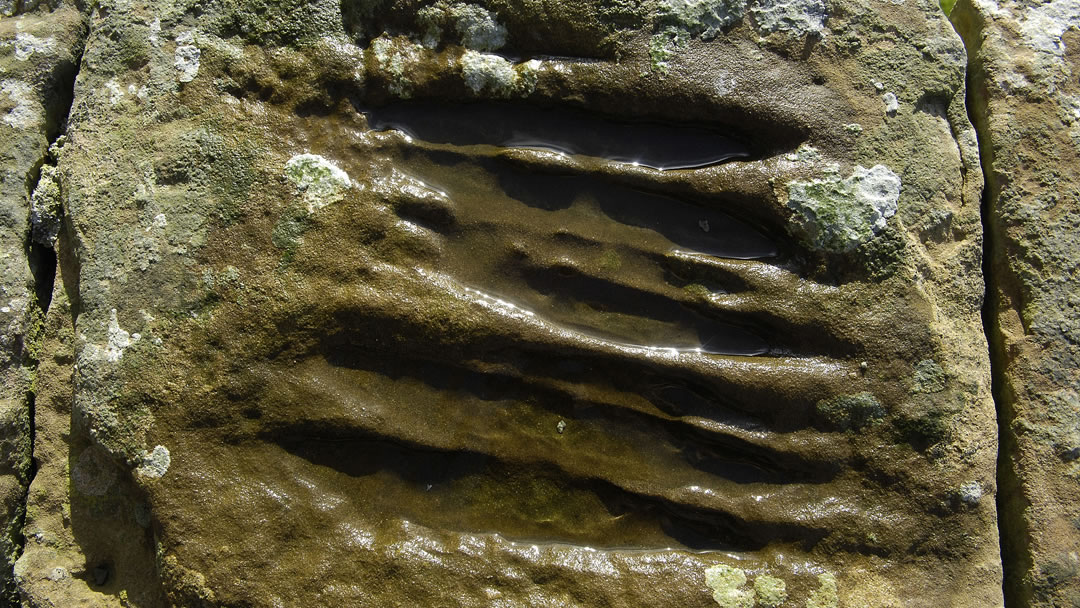
Orkney folklore tells the story of a Minister who preached against adultery on a Sunday but had his wicked way with the lady parishioners during the rest of the week. When the Devil came to take him to hell, the Minister fled into the church. Thwarted, the Devil raged outside, scouring the stonework with his claws!
Until recently, the ruin of Lady Kirk was a place that islanders were scared to walk past at night.
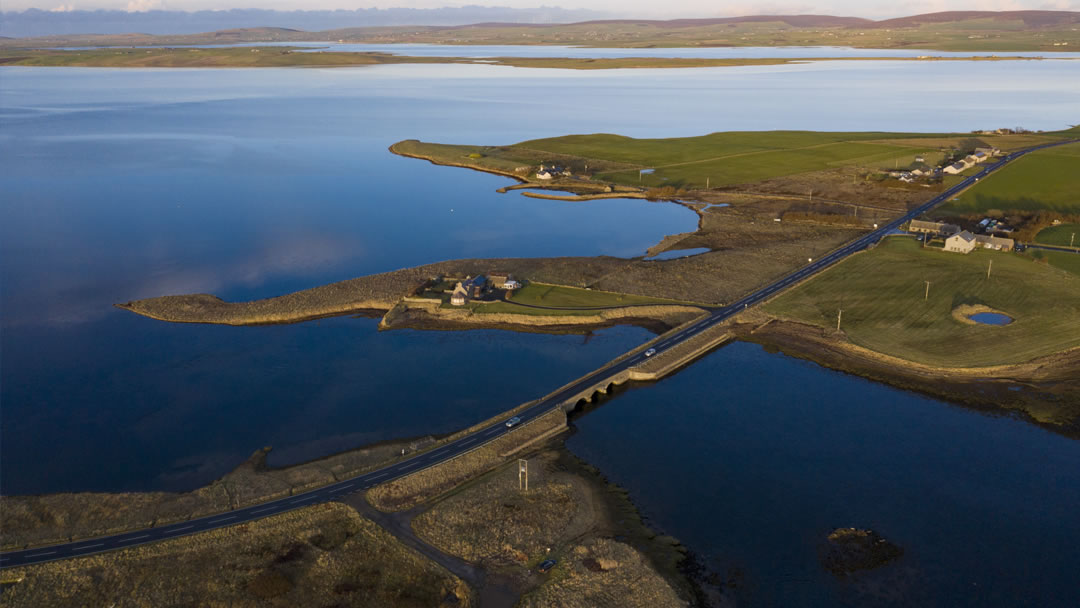
3) The Brig O’ Waithe, Stenness
Just outside Stromness the road to Kirkwall passes over the Brig O’ Waithe. This arched bridge is where the Loch of Stenness meets the sea. The name comes from the Old Norse ‘vað’ meaning ‘wading place’ or ‘ford’ and the waters that flow under this bridge can be fast moving. It’s not just water that flows under here though. Seals swim in from the sea and haul out on the edges of the loch, and at dawn and dusk, you may spot otters on the grassy island nearby.
Before the current bridge, the previous wooden bridge had no railings and a few perished trying to cross it! However, the current Brig O’ Waithe, built in 1859, is a much sturdier construction. During World War 2, holes for explosive charges were placed under the bridge, just in case Orkney was ever invaded!
Near the Brig O’ Waithe is Unstan Chambered Cairn, and at the Orphir junction, the spot where the first British civilian killed in WW2 was struck by a stray bomb from a German plane.
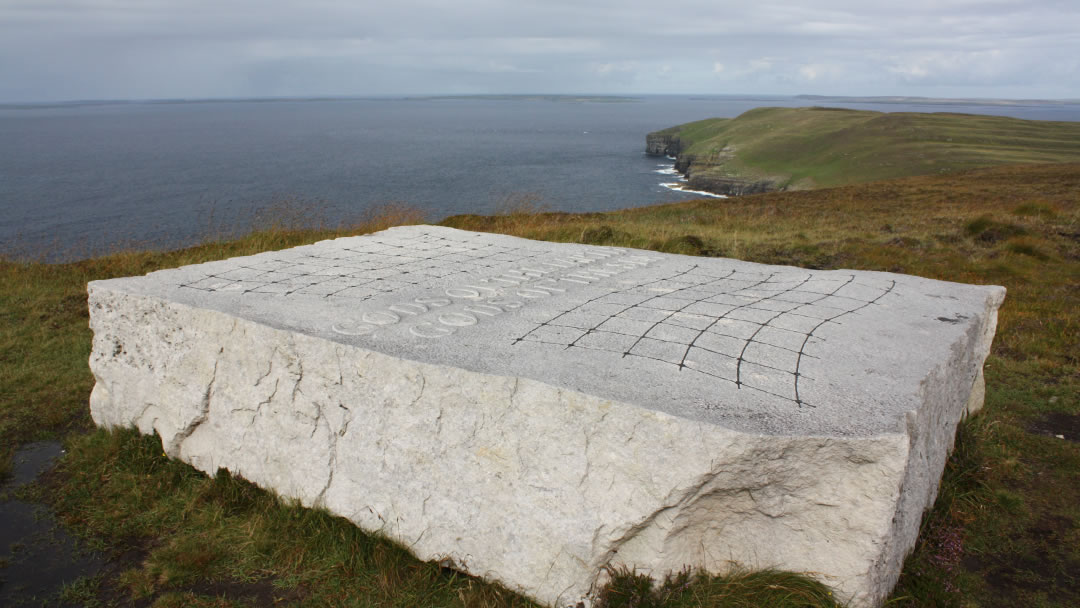
4) Ian Hamilton Finlay sculpture, Rousay
Standing on a lonely black clifftop on the north coast of Rousay, there’s a massive white slab of Portland stone, measuring 7½ m long and 2m wide.
This sculpture features the words of poet Ian Hamilton Finlay (1925–2006), who lived on the island in the 1950s, and helped to repair the island’s single circular road. Inscribed ‘Gods of the Earth / Gods of the Sea’, the sculpture was created by stone-carver Nicholas Sloan and installed on the island, looking seaward, in 2005. It’s a striking sight to see, well worth a visit during a long summer afternoon.
One year before he passed away, Finlay overcame the agoraphobia he had suffered for 30 years to visit the installation.
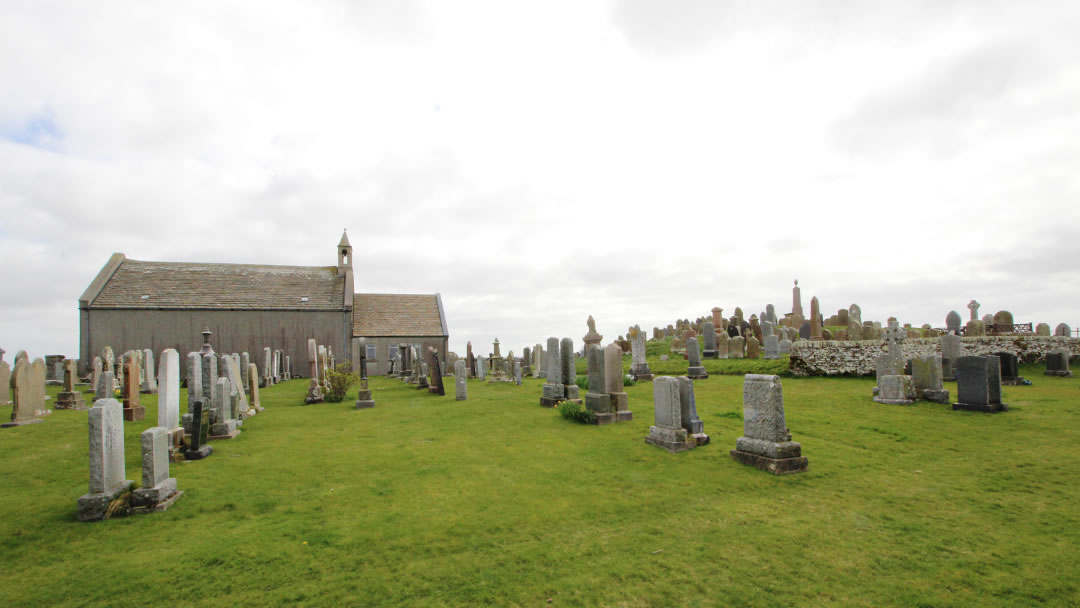
5) St Michael’s Kirk, Harray
There are several reasons to visit St Michael’s Kirk and its graveyard on a hilltop in Harray. The view from St Michael’s Kirk is quite spectacular, and almost all of Orkney’s only land-locked parish can be seen from here. There’s nothing lovelier than watching shafts of light from the clouds moving across farmland and lochs.
The kirkyard at St Michael’s Kirk has several interesting graves, including that of novelist Eric Linklater (1899-1974), and his daughter Kristen Linklater (1936-2020), a vocal coach who ran the Kristin Linklater Voice Centre nearby.
One of the most fascinating features at St Michael’s Kirk is the rising mound of tombstones – a jumble of older graves which have been set into the remains of an Iron Age broch.
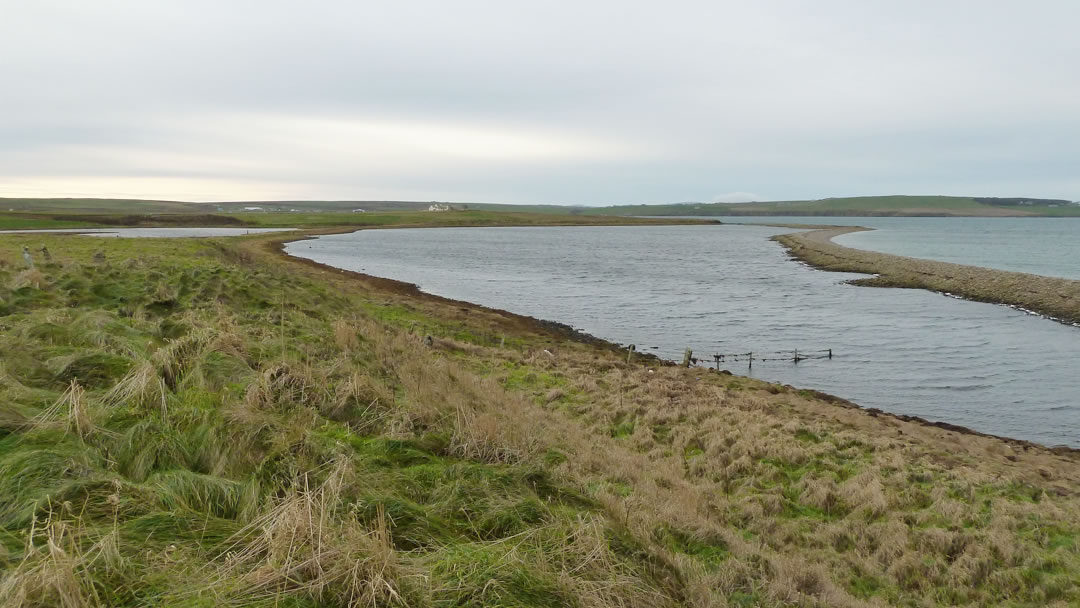
6) The Twin Ayres at Weethick
An ayre is a shingle beach which separates a loch from the sea. At Weethick in Tankerness near Kirkwall airport, there’s a natural phenomenon – two ayres and two lochs, right next to the sea.
Long Ayre separates the sea from a tidal pool, and Cloven Ayre holds in the Loch of Swarsquoy. The area is well worth a visit for a quiet stroll, and a superb place to spot wading birds scuttering away from the tide.
In Viking times, the Twin Ayres at Weethick was used as a safe harbour.
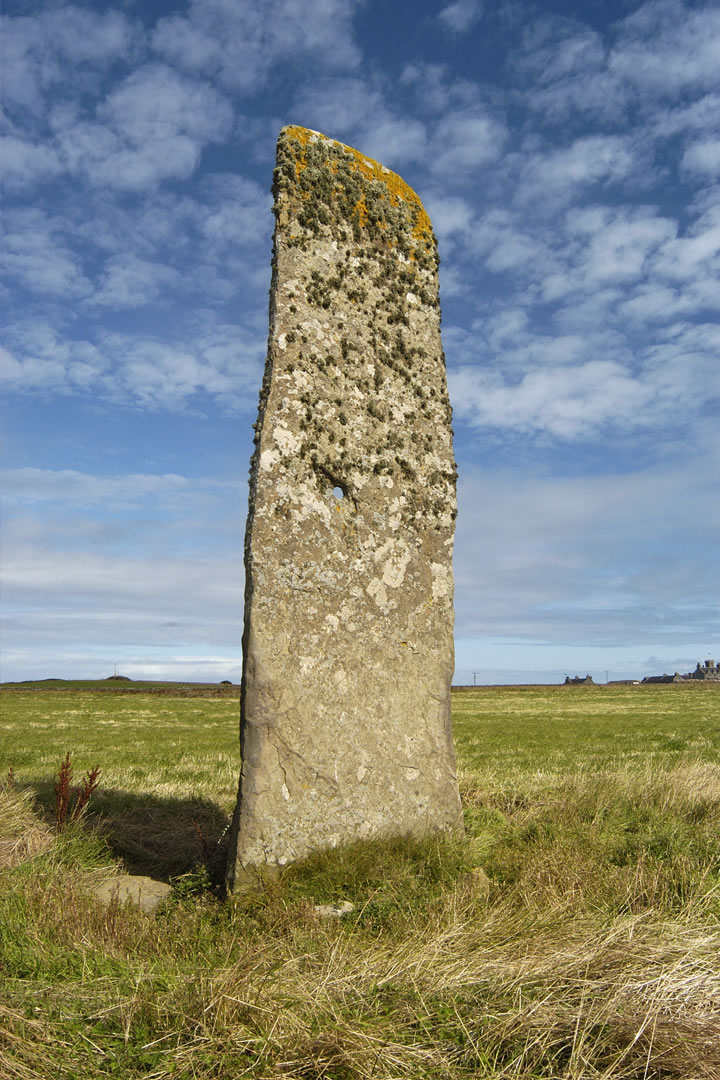
7) The Stan Stone, North Ronaldsay
At the south end of North Ronaldsay, close to the pier, there’s a lone standing stone in a field surrounded by rough grass and wildflowers.
The 13ft high and 3ft wide North Ronaldsay Stan Stone is quite unique. It has a small finger-sized hole through it. It’s possible the hole was used for astronomical purposes, or for sighting another stone or a spot of interest. Folklore states that the hole was created when a giant woman picked the stone up from the beach!
In the past, Islanders would meet and sing around the stone on the first day of each New Year.
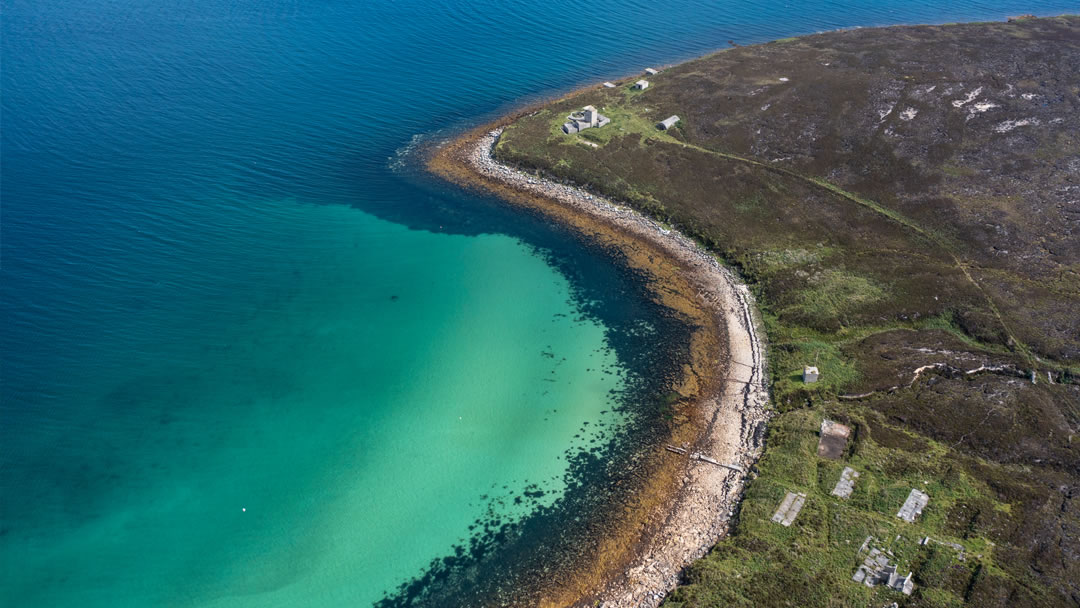
8) Scad Head, Hoy
Located on the coast, 600m down a steep hillside from the road which passes Betty Corrigall’s Grave in Hoy, stands the Second World War coastal defence battery, Scad Head.
A tall observation post, battery, engine room and searchlight emplacements once watched over shipping to and from Scapa Flow, and it was armed with two quick-firing 12-pounder guns, which were later replaced by twin six-pounders.
A railway once led down to it, and if you look amongst the rocks on the shore, you may find the rusted remains of old railway trolleys, and an anti-submarine boom net.
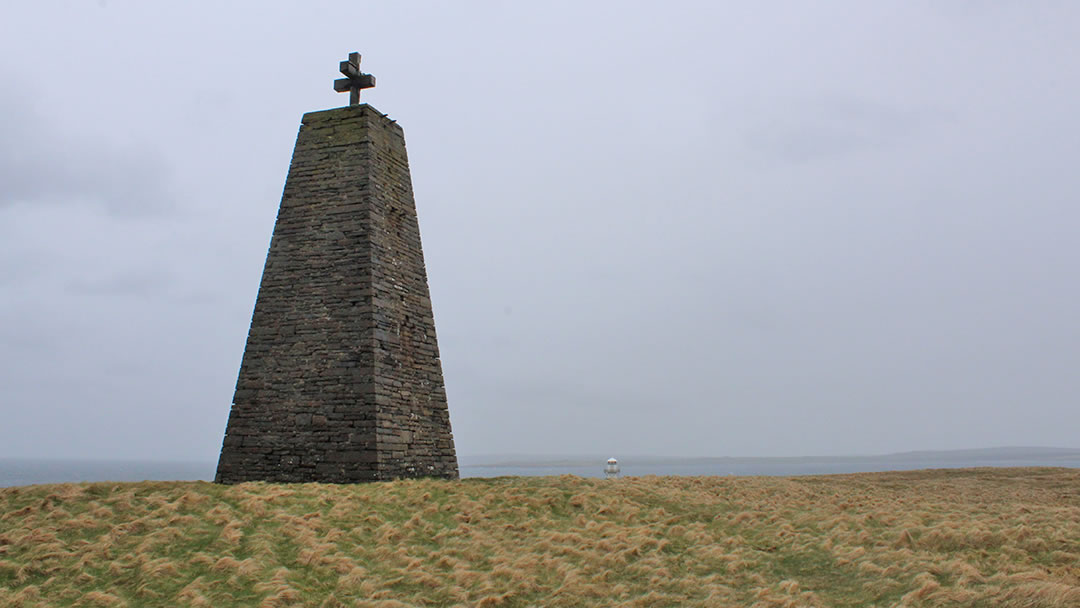
9) Beacon at Rose Ness
The cliffside beacon at Rose Ness in Holm can be seen from miles around, especially from the South Isles and the Churchill Barriers, but to reach it up close requires a little bit of a walk. Take the Cornquoy road and you’ll soon find a parking spot next to a sign for a coastal path. This gentle walk is 30-40 minutes long each way, and takes in cliffs, at least three sea stacks, a Neolithic chambered cairn, a gloup (a collapsed sea cave) and great views of Copinsay.
The beacon itself is a large geometric shape, around 12m tall and it was built on top of a Neolithic Horned Cairn. The tall square stone tower was built in 1867 and topped with a timber cross. It was used as a navigation aid for shipping in the past. A modern equivalent can found further on – a squat lighthouse built in 1983 – which replaced an earlier cast-iron beacon from 1905.
Rose Ness marks the most southerly point of the Orkney Mainland.
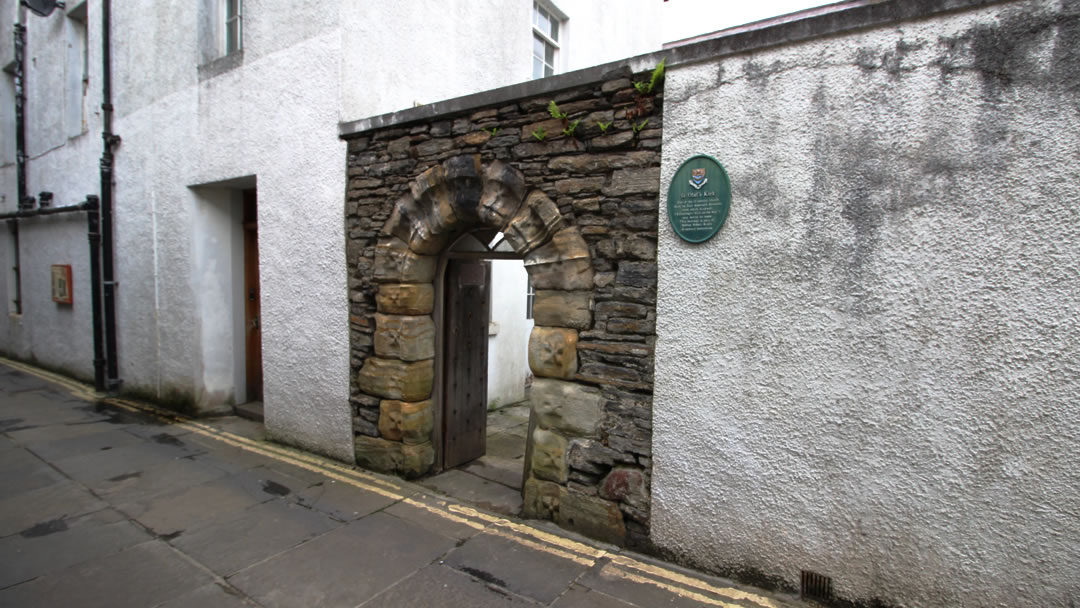
10) St Olaf’s Kirk, Kirkwall
Kirkwall, the largest town in Orkney has a name which means ‘church on the bay’. Though Kirkwall’s skyline is now dominated by St Magnus Cathedral, the church being referred to in the town’s name was St Olaf’s Kirk.
St Olaf’s Kirk was built in 1046 by Earl Rognvald Brusison and the oldest part of the town formed around it. It was dedicated to his foster father, King Olaf of Norway who died in battle in 1030.
The kirk was originally built from wood so the stone remnants of St Olaf’s Kirk, including the spectacular archway, which can be found on St Olaf’s Wynd, are probably from a later rebuild.
 By Magnus Dixon
By Magnus DixonOrkney and Shetland enthusiast, family man, loves walks, likes animals, terrible at sports, dire taste in music, adores audiobooks and films, eats a little too much for his own good.
Pin it!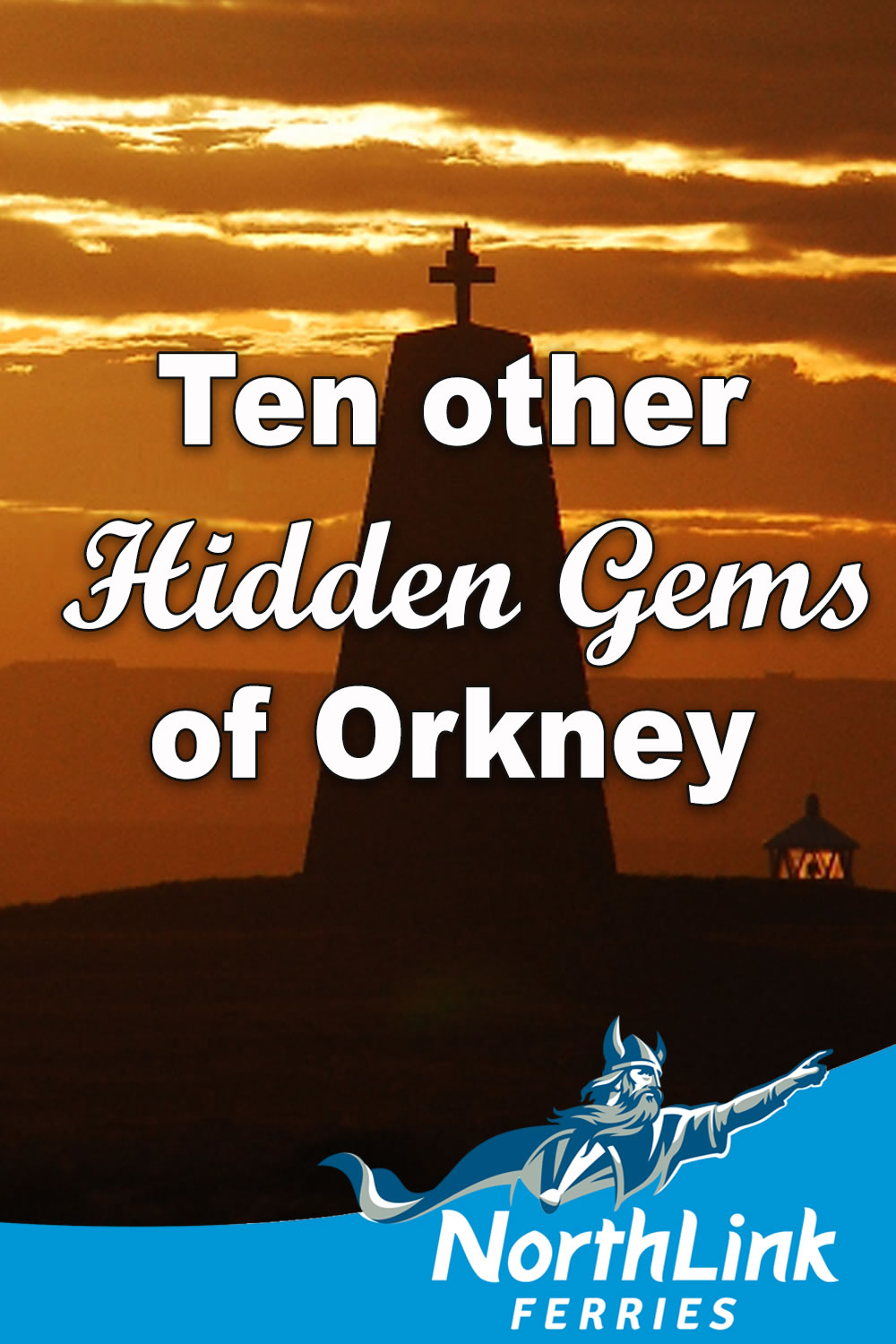
Pinterest image: The Beacon at Rose Ness at sunset photo © Copyright Ian Balcombe and licensed for reuse under this Creative Commons Licence
